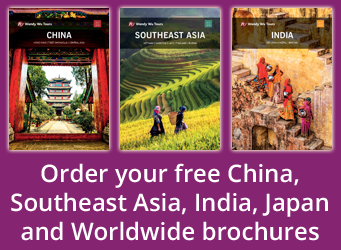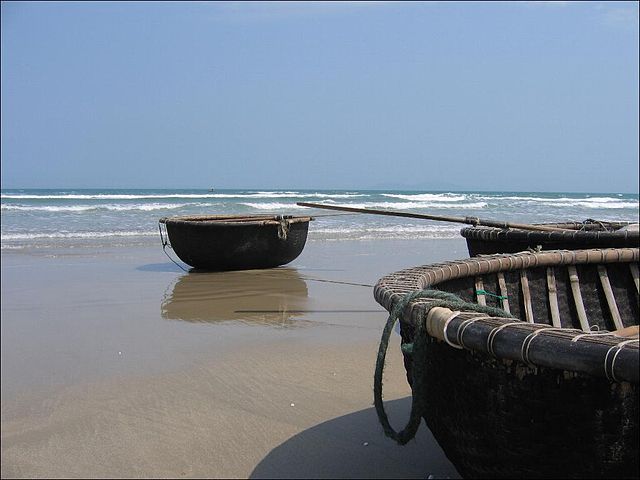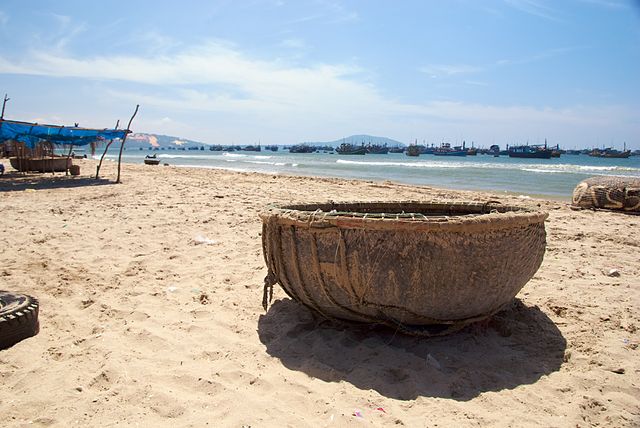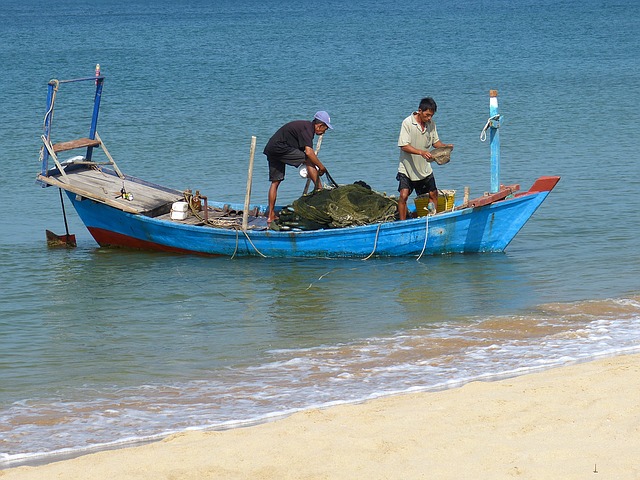Fishing is at the heart of Vietnamese culture and many communities rely on the marine life to provide income and food for their families. As with this, the traditional basket boats of Vietnam have been created and re-designed over the years in line with technological advancements and politics to encourage the best of fishing off the Vietnamese coast.
Vietnamese fishing
Agriculture is the main source of income in Vietnam and employs more than half of its 89.71 million population, therefore the fishing boats that line the coast are essential to sustaining the livelihoods of the people.
Thuyen Thung
Westernisation of Southeast Asia, especially in Vietnam, has also helped to develop different styles of fishing throughout the centuries and can be clearly seen when visiting the magnificent country on a Vietnam tour.
Coracles, native to Wales, have been used in Vietnam for centuries and are just as prominent today. The hollow oval-shaped design, with an interwoven frame made of bamboo and a canvas layer, enables fishermen to quickly manoeuvre the small boat, which is about two metres wide.
Although the coracles, known as Thuyen Thung in Vietnam, are small, they are a handy tool for fisherman who aren’t as fortunate as those with modern boats and are cheaper to run compared to boats with diesel engines. Due to the coracle causing hardly any noise and movement of the water, they become just as effective for catching fish compared to the high powered vessels.
The history behind one of the most widely used forms of transportation on the waters of Vietnam is just as interesting, as Colm Hutchinson, editor at Discover Nha Trang, explains:
“There is little official documentation about the origins of the Basket Boat. However, it is said that during the French Colonial Era, a variety of new taxes were introduced; one of these being a tax on owning a boat. The poor regional fisherman couldn’t pay the charge, and risked losing their livelihoods.
“As they say, ‘necessity is the mother of all invention’, and so, they came up with a plan to circumvent the tax. Creating a sea-worthy vessel that would not be considered a boat was no easy task, but the ingenious fishermen successfully argued that these were not boats at all, but baskets – and therefore couldn’t be taxed. Their crafty plan actually worked, and ever since, these iconic crafts have become a mainstay in coastal Vietnam.”
Just like how Vietnamese people use ingenious craftsmanship to create spectacular rice fields carved into the mountainous countryside, the coracle also shows the craftsmanship and heritage of the boat in Vietnam, as the Vietnamese have altered the traditional Welsh design to suit the Southeast Asian waters. Where the Welsh would tend to use fibreglass to hold the wooden boat together, the Vietnamese design theirs with resin and coconut oil – a natural product grown across the country – making it cheaper to build.
Colm adds:
“Affectionately referred to as the ‘Right Arm’ of the fisherman and the ‘Child’ of the mother boats, ‘Thuyen Thung’ is an inseparable part of a fisherman’s life. It is a multi-purpose craft: used as a very effective lifeboat in case of emergency, a singular boat to catch fish close to shore and a small, lightweight means of carrying cargo and people to and from the larger boats anchored offshore.
“Local fishermen use the boats extensively as a means of carrying cargo to and from larger vessels, and as a boat with which to catch smaller fish close to shore. They are also an inseparable part of the lives of island inhabitants, and the production and use of the basket boat is a skill passed down through generations.”
Modernisation of the traditional wooden boat
Just like the country itself, Vietnamese fishing has changed with the times. Although the coracle has been the fishing boat of choice for many, larger vessels have taken over the seas in recent years and have become the wooden boat of choice for many.
Those who are able to afford engine-powered vessels are able to use their wooden boats in deeper waters, enabling them to capture greater hordes of fish and other seafood of the season.
On the other hand, the elongated traditional wooden boat design, the stereotypical image of Vietnamese fishing, has been an effective form of transportation for the Vietnamese. The long, sleek wooden design allows the fishermen to paddle through the waters with minimum effort, whilst creating less friction and disturbance of the water, perfect for a successful fishing trip.
Colm concludes:
“While the fishing industry in general in Vietnam is dominated by larger vessels that can travel further out to sea, basket boats are a very important craft for near-shore fishing and transportation.”
 Book an award winning trip to Vietnam with the Asia experts, Wendy Wu Tours. Our escorted Vietnam tours visit all the major sights for an unforgettable holiday.
Book an award winning trip to Vietnam with the Asia experts, Wendy Wu Tours. Our escorted Vietnam tours visit all the major sights for an unforgettable holiday.
For more information on when to go, take a look at our Best Time to visit Vietnam Page
Image Credit: Gilad Rom (Wikimedia Commons), Hans Dekker (Wikimedia Commons), falco
























